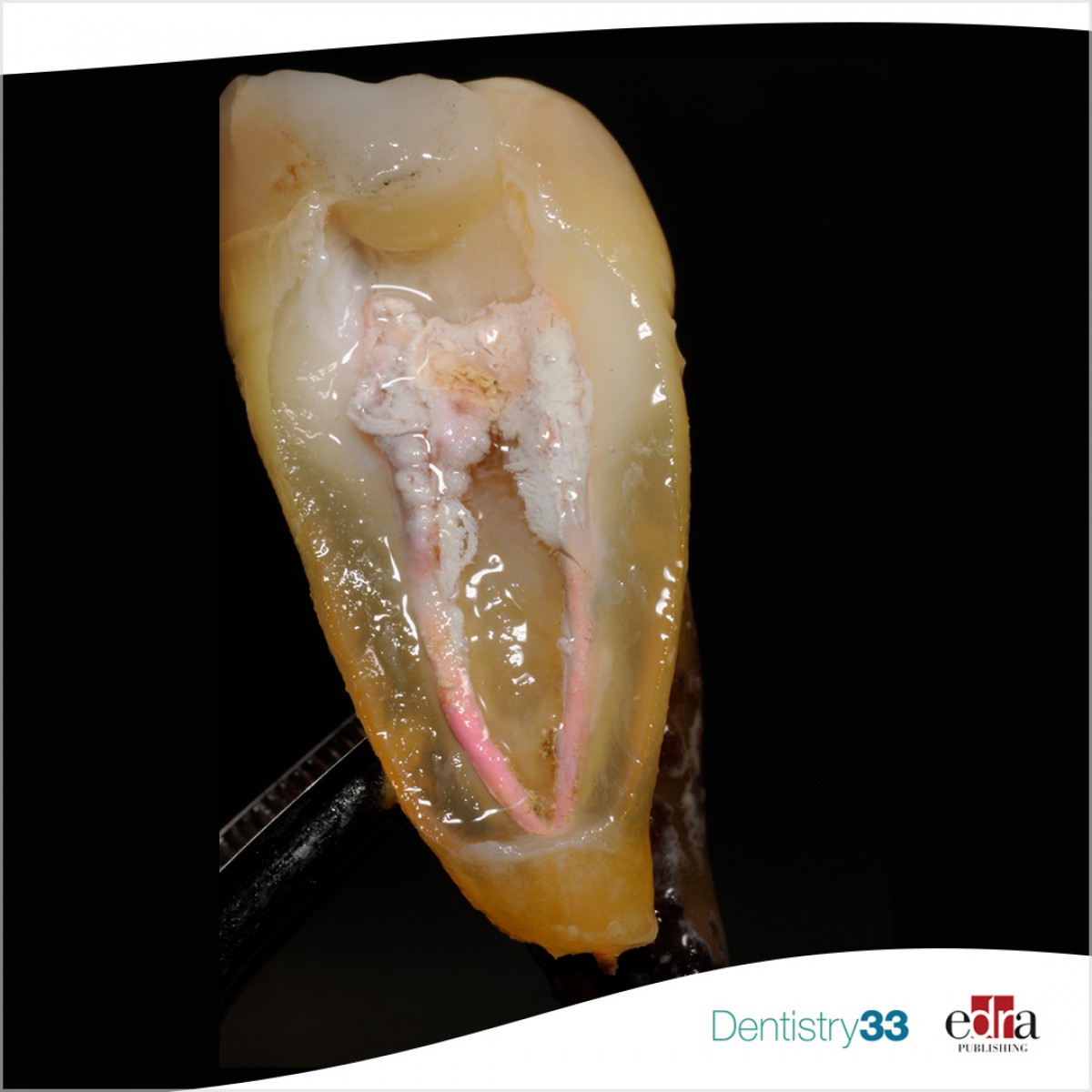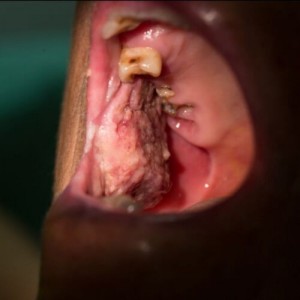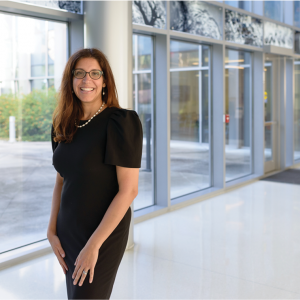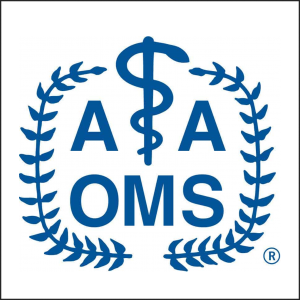
Regenerative endodontic therapy and the benefit of dentinal conditioning with maleic acid.
Lara Figini
The main purpose of regenerative endodontic therapy (RET) is the eradication of root canal infections and the stimulation of bone healing, with the aim of obtaining an increase in root wall thickness and / or root length while maintaining a positive response to the vitality. Regenerative endodontic therapy involves the following phases: disinfection and deproteinization, using sodium hypochlorite (NaOCl) and conditioning with EDTA respectively, control of bleeding and final restoration. Chemically released growth factors are significant in regenerative procedures. These growth factors are bioactive molecules (chemically proteins or polypeptides) that modify the cellular response through intercellular communication, improve the secretory activity of odontoblasts and promote the localization of dental pulp stem cells to the wound site by inducing their differentiation into cells producing osteodentine. The dentine matrix consists of numerous growth factors, including transforming growth factors, insulin-like growth factors, platelet-derived growth factors, vascular endothelial growth factors, fibroblast growth factors basic and epidermal growth factors, all of which are sequestered during dentinogenesis. Therefore, each growth factor plays a distinct role in tooth development.
The transforming growth factor beta 1 (TGF-b1) is one of the most substantially studied bioactive molecules; promotes cell proliferation, differentiation and chemotaxis in various cell types. Therefore, it is considered to be the essential molecule for pulp regeneration.
Dentin conditioning can contribute to the success of regenerative endodontic procedures, so much so that a concentration of 17% of EDTA solution codetermines the outcome of stem cells allowing them to adhere to the dentinal walls and promote their differentiation. 7% maleic acid (MA) is another known chelator useful in this phase of endodontic regeneration. Compared to 17% of EDTA, 7% of MA causes greater surface roughness of the intraradicular dentin, which helps to improve the bonding of the sealing adhesive material.
But what is the type of dentine conditioning that causes a greater release of transforming growth factors beta 1 (TGF-b), predisposing to a successful regenerative endodontic therapy?
Materials and methods
In an in vitro study, published on Journal of Endodontics in May 2022, the authors analyzed the effect of conditioning with maleic acid (MA) at 7% of infected root canals on the release of transforming growth factors beta 1 (TGF-b ). The authors considered 75 decorated single root human teeth. The authors checked through radiographs the presence of only one canal with a mature apex and the absence of any calcification or resorption. A low speed diamond disc (Horico Dental, Berlin, Germany) was used under refrigeration to standardize the root length to 7mm.
Two groups:
sterile group (n = 36) and infected group (n = 39).
The size of the root canal lumens was homogenized to 1.3 mm with the help of a Peeso # 3 Reamer (Mani Inc, Tochigi, Japan); 0.5% Chloramine T (Sigma-Aldrich, St. Louis, MO) was used to disinfect all teeth, after which the latter were stored in double distilled water until they were used.
Subsequently, all the samples of both groups were irrigated for 10 minutes with 10 ml respectively of:
- 1.5% sodium hypochlorite (NaOCl),
- 7% maleic acid MA,
- 17% EDTA,
- a combination of 1.5% NaOCl with 17% EDTA or
- a combination of 1.5% NaOCl with 7% MA.
The amount of TGF-b1 was quantitatively estimated using an enzyme-linked immunosorbent assay kit.
Results
TGF-b1 release was found to be lowest in biofilm samples compared to non-biofilm samples for all irrigant groups. Maleic acid MA 7% with 1.5% NaOCl showed the formation of higher release quantities of the growth factor TGF-b1 compared with the combination of 17% EDTA and 1.5% NaOCl both in biofilm samples than in non-biofilm samples. Non-biofilm samples treated with only 7% MA showed greater growth factor release than EDTA alone at 17%, but there was no significant difference in growth factor release between biofilm samples treated with the 7% MA and 17% EDTA.
Conclusion
From the data of this study, which must be confirmed in other similar studies, it can be concluded that bacterial biofilms modify the release of TGF-b1. The irrigant based on 7% MA maleic acid is significantly more effective than 17% EDTA in promoting the release of TGF-b1 growth factors from root dentin.
Clinical implications
The results of the present study suggest that root canal conditioning with the combination of 1.5% NaOCl and 7% MA may be more beneficial than 1.5% of NaOCl with 17% EDTA as it promotes a release of major growth factors predisposing to a better success of regenerative endodontic therapy.
For additional information: Effect of Maleic Acid Root Conditioning on Release of Transforming Growth Factor Beta 1 from Infected Root Canal Dentin
 Read more
Read more
Implantology 17 October 2025
To investigate whether cross-section imaging influences the planning and therapy of standard implant cases in the posterior mandible.
Editorials 17 October 2025
In her new role she is providing direction and supporting initiatives that elevating UFCD's translational research agenda.
Products 17 October 2025
Presto Dental, a new brand affiliated with the Abra Health Group, proudly announces the grand opening of its flagship Connecticut location in Bridgeport. This state-of-the-art.
News 17 October 2025
The American Association of Oral and Maxillofacial Surgeons (AAOMS) celebrated the achievements of more than 30 individuals at the association’s 107th Annual Meeting, Scientific Sessions and...
Phenom, an applied AI company that helps organizations hire faster, develop better, and retain longer, announced The Aspen Group (TAG) earned the Brandon.










